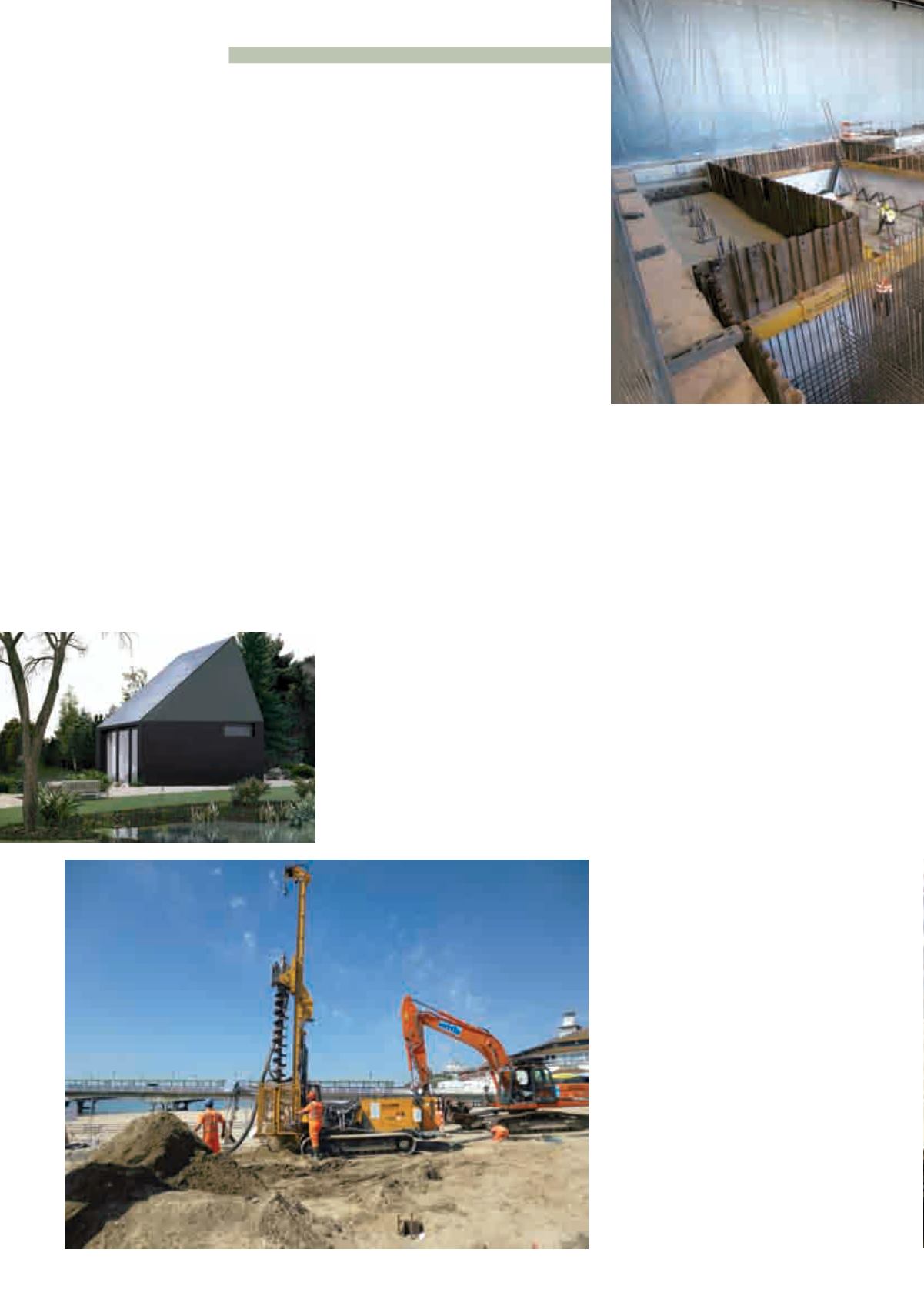
30
CONSTRUCTION EUROPE
SEPTEMBER 2014
FOUNDATIONS
Solid start
A
strong base will give a solid start to any
type of construction, and choosing
the right foundation method depends
on the type and size of the building, the nature
of the soil and the environmental conditions.
In addition, soil analysis can often prove vital,
and soil reinforcement is sometimes essential.
Strip foundation is a common method,
especially for smaller buildings such as houses
and bungalows. This is especially suited to
areas with a strong soil base that are not prone
to flooding.
Pad foundations use concrete pillars cast
from the foundation to carry a slab at the top
of the ground. This is often used when the
space under the building is to be used, for
example for parking.
Raft foundations are used in areas where
the soil is sandy and loose. More expensive
than the first two, it involves concrete spread
around the building from the base of the
foundation to the ground floor slab.
Pile foundations are the most expensive and
strongest type of foundation, and are favoured
for large-scale and high-rise development. The
soil is bored deep and filled with concrete to
be able to support multi-storey loads.
Groundwork is essential for good, strong
foundations. Italian manufacturer DAT
Instruments specialises in instruments and
software for such jobs as piling, jet grouting,
CFA (continuous flight auger), diaphragm
walls, grout injection and soil mixing.
The company’s dataloggers are used for real
time measurement of foundation parameters
with the purpose of understanding what lies
beneath. The dataloggers can track foundation
penetration rate and alert contractors to
cavities, the depth of rocks and different soil
substrates.
DAT Instruments’ JET 4000 AME/J can
track the drill depth, feed force, rod speed
translation, boring rod rotation torque and
Foundation technology is advancing, as
buildings get bigger. From 3D piling technology
to next-generation foamed concrete,
Sarah McCay
takes a closer look at the latest developments
speed, the mast bi-axial inclination, fluid
pressure, fluid flow and volume, ending with
the soil relative energy.
MACHINE CONTROL
Trimble Navigation’s Heavy Civil Construction
Division has introduced a new 3D machine
control system for a variety of piling machine
makes and models.
Now available in Europe, the DPS900 Piling
System can be used on building structural
foundations, retaining walls, coffer dams, and
solar or wind farm installations.
Alan Sharp, business area director for Trimble
Heavy Civil Construction, said, “The DPS900
Piling System can transform the way piling
contractors work. Without DPS900, the process
is manual and often error prone. With the
system, contractors can take advantage of
accurate positioning and automated reporting
to ensure machines are being utilised
efficiently.”
According to Trimble, the DPS900 Piling
System reduces surveying costs associated
with staking and as built checks. In addition,
the system can increase on-site safety by
reducing the number of people around
machines, pilings and foundations. The
DPS900’s accurate positioning can reduce the
navigation time between piles, speeding up
construction.
The IT system captures start and end drill
positions, time and elevation as well as actual
embedment depth, blow count reporting, and
inclination and orientation control.
Trimble offers a total solution alongside the
DPS900. The firm’s HCE office software can
be used to create pile plans in the office, and
can work with data preparation, estimating
and reporting functions. Piling machines
can be connected to the office using Trimble
Connected Site solutions for wireless data
transfer and GNSS corrections.
In addition, machines can be tracked and
monitored using VisionLink for location, hours
and usage information.
UK site preparation specialist Groundforce
has been working with the Nuclear Advanced
Manufacturing Research Centre (NAMRC) in
the north of England, on a special foundations
project.
Propump Engineering’s foamed concrete
was used to create a thermally efficient
foundation and ground slab to the UK’s
first ‘off-grid’ building
Suttle Projects’ new Klemm
KR709-2 gets to work on
Bournemouth Beach


